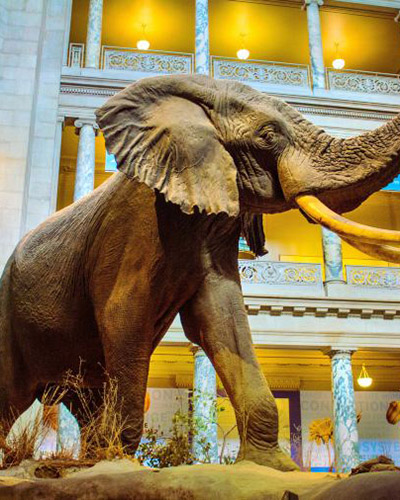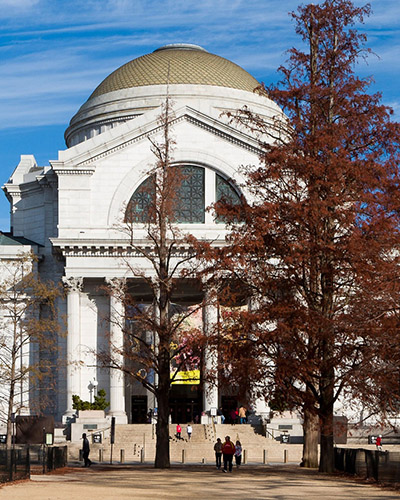Orsay Museum
This article is about the museum. For other uses, see D'Orsay (disambiguation).
The Musée d'Orsay (UK: /ˌmjuːzeɪ dɔːrˈseɪ/ MEW-zay dor-SAY, US: /mjuːˈzeɪ -/ mew-ZAY -, French: [myze
dɔʁsɛ]) is a museum in Paris, France, on the Left Bank of the Seine. It is housed in the former Gare
d'Orsay, a Beaux-Arts railway station built between 1898 and 1900. The museum holds mainly French art dating
from 1848 to 1914, including paintings, sculptures, furniture, and photography. It houses the largest
collection of Impressionist and post-Impressionist masterpieces in the world, by painters including Berthe
Morisot, Monet, Manet, Degas, Renoir, Cézanne, Seurat, Sisley, Gauguin, and Van Gogh. Many of these works
were held at the Galerie nationale du Jeu de Paume prior to the museum's opening in 1986. It is one of the
largest art museums in Europe.
In 2020 the museum had 867,724 visitors, down 76 percent from attendance in 2019, due to the COVID-19
pandemic. Despite the drop, it ranked fifteenth in the list of most-visited art museums in 2020.
.jpg)
.jpg)
History
The museum building was originally a railway station, Gare d'Orsay, located next to the Seine river. Its
central location was convenient for commuting travelers.[4] The station was constructed for the Chemin de
Fer de Paris à Orléans and finished in time for the 1900 Exposition Universelle to the design of three
architects: Lucien Magne, Émile Bénard and Victor Laloux. The Gare d'Orsay design was considered to be an
"anachronism."[5] Since trains were such a modern innovation for the time architects and designers alike
expected a building that would embody the modern traits of this new mode of transportation. Gare d'Orsay
instead gained inspiration from the past for the concept of the facade to the point of masking the
cutting-edge technology within. It was the terminus for the railways of southwestern France until 1939.
By 1939 the station's short platforms had become unsuitable for the longer trains that had come to be used
for mainline services. After 1939 it was used for suburban services and part of it became a mailing centre
during World War II. It was then used as a set for several films, such as Kafka's The Trial adapted by Orson
Welles, and as a haven for the Renaud–Barrault Theatre Company and for auctioneers, while the Hôtel Drouot
was being rebuilt.
.jpg)
In the 1970s work began on building a 1 km-long tunnel under the station as part of the creation of line C
of the Réseau Express Régional with a new station under the old station. In 1970, permission was granted to
demolish the station but Jacques Duhamel, Minister for Cultural Affairs, ruled against plans to build a new
hotel in its stead. The station was put on the supplementary list of Historic Monuments and finally listed
in 1978. The suggestion to turn the station into a museum came from the Directorate of the Museum of France.
The idea was to build a museum that would bridge the gap between the Louvre and the National Museum of
Modern Art at the Georges Pompidou Centre. The plan was accepted by Georges Pompidou and a study was
commissioned in 1974. In 1978, a competition was organized to design the new museum. ACT Architecture, a
team of three young architects (Pierre Colboc, Renaud Bardon and Jean-Paul Philippon), were awarded the
contract which involved creating 20,000 square metres (220,000 sq ft) of new floorspace on four floors. The
construction work was carried out by Bouygues.[6] In 1981, the Italian architect Gae Aulenti was chosen to
design the interior including the internal arrangement, decoration, furniture and fittings of the museum.
The arrangement of the galleries she designed was elaborate and inhabited the three main levels that are
under the museum's barrel vault atrium. On the main level of the building, a central nave was formed by the
surrounding stone structures that were previously the building's train platforms. The central nave's
structures break up the immense sculpture and gallery spaces and provided more organized units for viewing
the art.[7] In July 1986, the museum was ready to receive its exhibits. It took 6 months to install the 2000
or so paintings, 600 sculptures and other works. The museum officially opened in December 1986 by
then-president François Mitterrand.
.jpg)
At any time about 3,000 art pieces are on display within Musée d'Orsay. Within the museum is a 1:100 scale
model created by Richard Peduzzi of an aerial view of Paris Opera and surrounding area encapsulated
underneath glass flooring that viewers walk on as they proceed through the museum. This installation allows
the viewers to understand the city planning of Paris at the time, which has made this attraction one of the
most popular within the museum.
Another exhibit within the museum is "A Passion for France: The Marlene and Spencer Hays Collection". This
collection was donated by an Marlene and Spencer Hays, art collectors who reside in Texas and have been
collecting art since the early 1970s. In 2016 the museum complied to keeping the collection of about 600 art
pieces in one collection rather than dispersed throughout other exhibits. Since World War II, France has not
been donated a collection of foreign art this large. The collection favors mostly post-impressionist works.
Artists featured in this collection are Bonnard, Vuillard, Maurice Denis, Odilon Redon, Aristide Maillol,
André Derain, Edgar Degas, and Jean-Baptiste-Camille Corot.[8] To make room for the art that has been
donated, the Musée d’Orsay is scheduled to undergo a radical transformation over the next decade, 2020 on.
This remodel is funded in part by an anonymous US patron who donated €20 million to a building project known
as Orsay Grand Ouvert (Orsay Wide Open). The gift was made via the American Friends of the Musées d’Orsay et
de l’Orangerie.[9] The projected completion date is 2026, implementing new galleries and education
opportunities to endorse a conductive experience.
.jpg)
.jpg)
.jpg)
.jpg)







